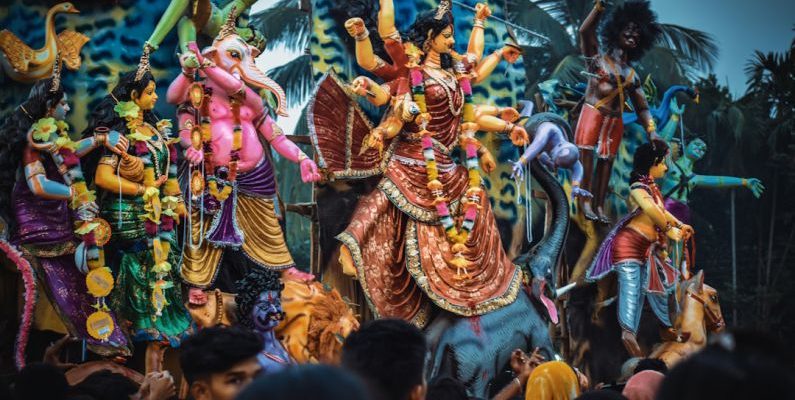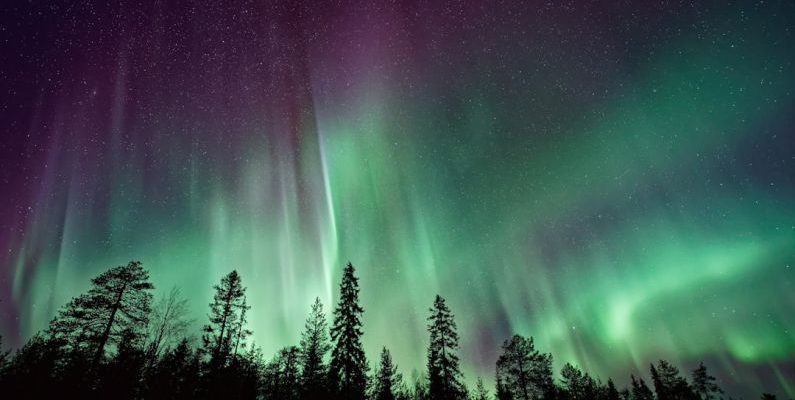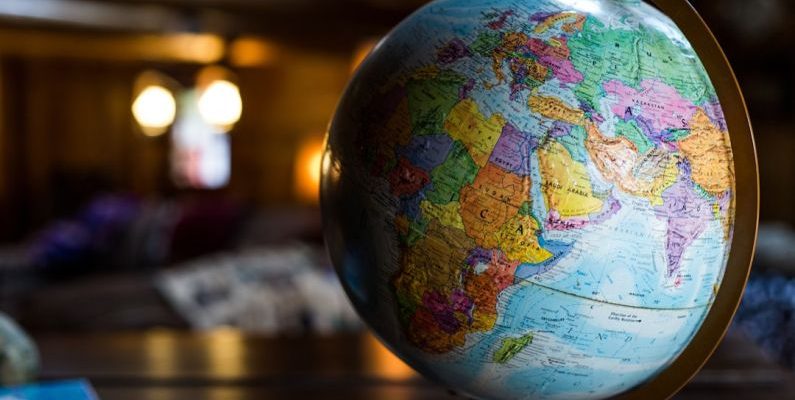Traveling has become an integral part of our lives, whether for work or leisure. With the advancements in technology, our smartphones have become a crucial tool to aid us in our journeys. From booking flights to finding the best local spots, there are numerous travel apps available that can make your journey easier and more enjoyable. Let's explore some of the top travel apps that you should consider downloading before your next adventure.
Author: vview
The allure of Fiji's crystal-clear waters and stunning landscapes make it a prime destination for adventure seekers and nature lovers alike. Among the myriad of activities available, kayaking stands out as a unique and immersive way to explore the beauty of this tropical paradise. Paddling through the blue waters of Fiji offers a glimpse into a world of vibrant marine life, secluded coves, and breathtaking vistas that will leave you in awe. Whether you are a seasoned kayaker or a novice looking for a new experience, Fiji's waters beckon with their promise of adventure and discovery.
Unleash Your Inner Explorer
Embarking on a kayaking adventure in Fiji is a chance to connect with nature in a way that few other activities can offer. As you glide through the calm waters, you will have the opportunity to observe the diverse marine life that calls Fiji's reefs and lagoons home. Keep an eye out for colorful fish darting beneath your kayak, graceful sea turtles gliding through the water, and perhaps even the majestic sight of a manta ray cruising past. The chance encounters with these creatures add an element of wonder and excitement to your journey, making each paddle stroke a new opportunity for discovery.Discover Hidden Gems
One of the joys of kayaking in Fiji is the ability to access secluded coves and hidden beaches that are unreachable by land. Paddle along the rugged coastline and you may stumble upon a pristine sandy beach fringed by swaying palm trees, perfect for a peaceful picnic or a refreshing swim in the turquoise waters. Explore sea caves carved into the cliffs, their dark interiors illuminated by shafts of sunlight filtering through the openings. These hidden gems offer a sense of serenity and seclusion, allowing you to escape the hustle and bustle of everyday life and immerse yourself in the tranquility of nature.Immerse Yourself in Culture
Fiji's rich cultural heritage is deeply intertwined with the sea, and kayaking provides a unique perspective on the traditional practices and beliefs of the local communities. In certain areas, you may encounter villages nestled along the coast where fishing and seafaring are integral parts of daily life. Witness fishermen casting their nets from outrigger canoes, a scene that has remained unchanged for generations. Engage with the locals and learn about their customs and traditions, gaining insight into the deep connection they have with the ocean that sustains them. By paddling through these waters, you become not just an observer, but a participant in the vibrant tapestry of Fijian culture.Embrace the Spirit of Adventure
For those seeking a more exhilarating kayaking experience, Fiji offers plenty of opportunities for adventure. Test your skills in the open sea as you navigate through waves and currents, feeling the thrill of the wind in your hair and the spray of saltwater on your skin. Join a guided kayaking tour that takes you to remote islands and reefs, where you can snorkel among pristine coral gardens teeming with life. Or paddle to a nearby marine reserve and witness the beauty of underwater ecosystems that are carefully protected and preserved. In Fiji, every kayak excursion is a chance to push your boundaries and create lasting memories of adrenaline-fueled escapades.A Watery Paradise Awaits
Kayaking the blue waters of Fiji is a journey of discovery, a blend of natural beauty, cultural immersion, and thrilling adventure that promises to leave a lasting impression. Whether you are drawn to the peaceful rhythms of coastal paddling or the adrenaline rush of ocean exploration, Fiji's waters offer something for every type of kayaker. So grab a paddle, launch your kayak, and set out to explore this watery paradise that beckons with its endless possibilities. Let the azure depths of Fiji's seas be your playground, and let the spirit of adventure guide you on a voyage of a lifetime.
Colors play a vital role in the rich tapestry of Indian culture, weaving through various aspects of life from spirituality to celebrations. The significance of colors in Indian culture is deeply rooted in traditions, beliefs, and societal norms, making them an integral part of everyday life.
Colors in Religion and Spirituality
In Indian culture, colors are not just visual elements but carry profound spiritual meanings. Each color is associated with different deities, rituals, and beliefs. For example, the color red symbolizes power, passion, and fertility and is often associated with the goddess Durga. Yellow is considered auspicious and is associated with knowledge and learning, represented by the god Vishnu. White symbolizes purity and is often worn during religious ceremonies and rituals. The color saffron is associated with renunciation and spiritual growth and is commonly worn by monks and ascetics.Festivals and Celebrations
Indian festivals are a riot of colors, with each festival having its own unique color significance. Holi, known as the festival of colors, is a vibrant celebration where people drench each other in colored powders and water. The colors used during Holi symbolize the arrival of spring, the victory of good over evil, and the playful nature of the festival. Diwali, the festival of lights, is a time when homes and streets are decorated with colorful lights, rangoli designs, and vibrant decorations. Each color used during Diwali signifies prosperity, happiness, and the triumph of light over darkness.Traditional Clothing
Indian traditional clothing is a canvas of colors, with each color carrying its own symbolism and significance. For example, red is considered an auspicious color for weddings and is often worn by brides. The color green symbolizes fertility and prosperity and is commonly worn during festivals and celebrations. White is worn during mourning and funerals as a sign of respect for the departed soul. The vibrant colors of Indian clothing not only reflect the diversity of the culture but also convey messages of joy, sorrow, and celebration.Color Symbolism in Art and Design
Indian art and design are characterized by intricate patterns, vibrant colors, and rich symbolism. From colorful rangoli designs adorning doorsteps to intricate mehndi patterns on hands, colors play a significant role in artistic expressions. Each color used in art and design carries its own symbolic meaning, reflecting the artist's emotions, beliefs, and aspirations. The use of colors in Indian art is not merely decorative but serves as a medium for storytelling, cultural expression, and spiritual reflection.The Influence of Colors on Daily Life
Colors permeate every aspect of daily life in India, from the colorful spices in the marketplaces to the vibrant textiles in the bazaars. The choice of colors in everyday objects, clothing, and decorations reflects personal beliefs, cultural traditions, and social status. For example, the color red is often associated with prosperity and good luck, which is why red is commonly used in weddings and other auspicious occasions. The color blue is associated with tranquility and peace, seen in the serene hues of the Indian ocean and the sky.Celebrating Diversity Through Colors
Indian culture is a mosaic of diverse traditions, languages, religions, and customs, and colors play a unifying role in celebrating this diversity. The kaleidoscope of colors seen in festivals, clothing, art, and daily life reflects the vibrant tapestry of Indian culture. Colors bridge the gap between the past and the present, connecting generations through shared traditions and beliefs. In a country as diverse as India, colors serve as a common language that transcends barriers and unites people in celebration and harmony.Embracing the Vibrancy of Indian Colors
The significance of colors in Indian culture is a testament to the rich heritage and traditions that have been passed down through generations. From religious rituals to festive celebrations, from traditional clothing to artistic expressions, colors infuse life with meaning, beauty, and symbolism. As we embrace the vibrancy of Indian colors, we immerse ourselves in a cultural tapestry that is as diverse and colorful as the rainbow itself. In every hue and shade, we find a story to be told, a belief to be shared, and a celebration to be cherished. Let us paint our lives with the colors of India, embracing the beauty and significance they bring to our world.
In Travel Gear
When it comes to packing for a trip, choosing the right clothing can make all the difference in how comfortable and stylish you feel during your travels. Whether you're exploring a new city, hiking in the mountains, or lounging on a beach, finding the perfect balance between comfort and style is key. With a few key tips and tricks, you can create a versatile travel wardrobe that will keep you looking and feeling your best wherever your adventures take you.
Choosing Versatile Pieces
One of the most important factors to consider when selecting travel clothing is versatility. Opt for pieces that can easily be mixed and matched to create a variety of outfits. This will not only help you pack lighter but also ensure that you have options for different activities and occasions. Look for neutral colors and classic styles that can be dressed up or down with the right accessories.Comfort is Key
While style is important, comfort should always be a top priority when choosing travel clothing. Opt for fabrics that are breathable, stretchy, and wrinkle-resistant to keep you feeling comfortable throughout the day. Consider the climate and activities you'll be participating in when selecting your outfits, and choose clothing that will keep you cool in hot weather and warm in cold weather.Layering for Different Climates
When traveling to destinations with varying climates, layering is key. Pack lightweight, versatile layers that can easily be added or removed to adapt to changing weather conditions. A lightweight jacket, cardigan, or scarf can make all the difference in keeping you comfortable as temperatures fluctuate throughout the day. Plus, layering adds dimension and interest to your outfits, allowing you to showcase your personal style.Invest in Quality Basics
Investing in high-quality basics is essential for building a stylish and functional travel wardrobe. Choose well-made pieces that will last through multiple wears and washes, such as a good pair of jeans, a versatile dress, and comfortable shoes. Quality basics will serve as the foundation of your travel wardrobe and can be dressed up or down with the right accessories to suit any occasion.Pack Smart Accessories
Accessories are a great way to add personality and style to your travel outfits without taking up too much space in your luggage. Pack versatile accessories like scarves, hats, and jewelry that can be mixed and matched with different outfits to create new looks. A statement necklace or colorful scarf can instantly elevate a simple outfit and take it from day to night with ease.Footwear for Comfort and Style
Choosing the right footwear is crucial when traveling, as you'll likely be doing a lot of walking and exploring. Opt for comfortable shoes that provide support and cushioning, such as sneakers, sandals, or stylish flats. Look for shoes that are both practical and chic, so you can stay comfortable while still looking put-together. Consider packing a pair of dressier shoes for evenings out or special occasions.Mixing Patterns and Textures
Don't be afraid to mix patterns and textures to add interest and depth to your travel outfits. Pair a striped top with floral pants or a denim jacket with a silk skirt for a fun and eclectic look. Mixing patterns and textures can help you create unique and stylish outfits that reflect your personal style and make a statement wherever you go.Embrace Local Fashion
One of the best parts of traveling is experiencing different cultures and styles, so why not embrace local fashion trends during your trip? Visit local markets and shops to pick up unique pieces that you can incorporate into your travel wardrobe. Whether it's a colorful scarf from a street vendor or a handcrafted piece of jewelry from a local artisan, adding a touch of local fashion to your outfits can create unforgettable memories and experiences. Finding the perfect balance between comfort and style when choosing travel clothing is essential for feeling your best and making the most of your adventures. By focusing on versatile pieces, prioritizing comfort, and adding personal touches with accessories and local finds, you can create a travel wardrobe that is both practical and stylish. So pack your bags, hit the road, and enjoy every moment in your perfectly curated travel outfits.Embarking on a Safari in Kenya: Encounter with the Wild
Venturing into the heart of Kenya for a safari experience is an exhilarating journey that promises unforgettable encounters with the wild. From the vast savannahs of the Maasai Mara to the stunning landscapes of Amboseli National Park, Kenya offers a diverse range of habitats teeming with an abundance of wildlife. A safari in Kenya is not just a vacation; it is a transformative experience that immerses you in the raw beauty of nature and allows you to witness the circle of life in its purest form.Exploring the Maasai Mara: The Land of the Big Five
The Maasai Mara National Reserve is undoubtedly one of the most iconic safari destinations in Kenya, renowned for its spectacular wildlife sightings and breathtaking landscapes. As you traverse the golden plains dotted with acacia trees, you will have the opportunity to encounter the Big Five - lions, leopards, elephants, buffalos, and rhinos - in their natural habitat. The thrill of witnessing a pride of lions on the prowl or a herd of elephants bathing in the river is a moment that will stay with you forever. In addition to the Big Five, the Maasai Mara is home to a myriad of other wildlife species, including cheetahs, zebras, giraffes, and wildebeests. The annual Great Migration, where millions of wildebeests and zebras cross the Mara River in search of greener pastures, is a spectacle like no other and a must-see event for any safari enthusiast.Discovering the Hidden Gems of Amboseli National Park
Nestled in the shadow of Mount Kilimanjaro, Amboseli National Park offers a unique safari experience with its stunning views of Africa's highest peak and diverse wildlife population. The park is famous for its large herds of elephants, which can often be seen against the backdrop of snow-capped Kilimanjaro, creating a picture-perfect scene that is a photographer's dream. Apart from elephants, Amboseli is also home to a variety of bird species, including flamingos, pelicans, and herons that inhabit the park's numerous swamps and lakes. A game drive through Amboseli presents the opportunity to witness the interplay between predator and prey, as lions, cheetahs, and hyenas hunt for food amidst the vast plains of the park.Immersing in the Rich Culture of the Maasai People
No safari experience in Kenya is complete without immersing yourself in the rich culture of the Maasai people, one of the country's most iconic tribes. A visit to a Maasai village offers a glimpse into the traditional way of life of these proud and resilient people, known for their distinctive red attire, intricate beadwork, and vibrant dances. Engaging with the Maasai community provides a deeper understanding of their customs, traditions, and spiritual beliefs, allowing you to appreciate the profound connection they have with the land and wildlife around them. From learning how to make fire using traditional methods to participating in a traditional jumping dance, interacting with the Maasai people is a cultural exchange that will leave a lasting impression.Capturing Unforgettable Moments on Safari
A safari in Kenya is a journey of discovery, a chance to witness the wonders of the natural world up close and personal. Whether it's tracking a leopard through the bush, observing a herd of elephants at a watering hole, or marveling at the vibrant hues of a sunset over the savannah, every moment on safari is a treasure trove of memories waiting to be captured. As you navigate the wild landscapes of Kenya, remember to savor each moment, to be fully present in the experience, and to embrace the magic of the untamed wilderness. A safari in Kenya is not just a vacation; it is a transformative journey that will forever change the way you see the world around you.In the Footsteps of Hemingway: A Safari Adventure to Remember
As you bid farewell to the wild plains of Kenya and the majestic creatures that call it home, take a moment to reflect on the profound impact that this safari experience has had on you. Like the great explorers and adventurers before you, you have ventured into the unknown, embraced the beauty of nature, and forged a connection with the wild that will stay with you long after you return home. In the footsteps of Hemingway, who found inspiration in the untamed landscapes of Africa, you too have discovered a world of wonder and awe that transcends words and defies description. Your safari in Kenya has been a journey of a lifetime, a testament to the enduring power of nature to captivate, inspire, and transform those who dare to seek its hidden treasures. So, as you journey back to the comforts of civilization, carry with you the memories of the wild, the echoes of the savannah, and the spirit of adventure that has fueled your safari in Kenya. For in this encounter with the wild, you have found not just an escape from the ordinary, but a profound connection to the extraordinary world that surrounds us.
The Northern Lights, also known as Aurora Borealis, is a natural phenomenon that has captivated people for centuries. This dazzling display of lights dancing across the night sky is a sight to behold, drawing travelers from around the world to the Arctic regions in search of this awe-inspiring experience.
Chasing the Lights
For many, witnessing the Northern Lights is a bucket-list item, a once-in-a-lifetime opportunity to witness nature's spectacular light show. The Arctic regions, including countries like Norway, Iceland, Sweden, Finland, and Canada, offer some of the best chances to see the Aurora Borealis in all its glory. Travelers often embark on Northern Lights tours, guided expeditions that take them to prime viewing locations away from light pollution, increasing the chances of a clear and vibrant display.The Science Behind the Magic
The Northern Lights are created when charged particles from the sun collide with the Earth's atmosphere, creating a stunning display of colors. These particles are drawn towards the Earth's magnetic poles, where they interact with gases in the atmosphere, producing the vibrant hues of green, pink, purple, and blue that light up the night sky. The intensity and colors of the Aurora Borealis vary depending on factors such as solar activity, atmospheric conditions, and location.Choosing the Right Time and Place
To increase your chances of seeing the Northern Lights, it's essential to choose the right time and place. The best time to witness this magical phenomenon is during the winter months when the nights are long and dark in the Arctic regions. Additionally, being away from artificial light sources such as cities and towns is crucial for optimal viewing conditions. Many tour operators offer Aurora forecasts to help travelers plan their trips for the best chance of seeing the lights.Immersing Yourself in Arctic Culture
Beyond the natural wonder of the Northern Lights, a trip to the Arctic regions offers a unique cultural experience. From traditional Sami culture in Lapland to the vibrant art scene in Reykjavik, there is much to explore and discover in these remote and enchanting destinations. Local guides often share stories and legends about the Aurora Borealis, adding a cultural perspective to the mystical phenomenon.Capturing the Magic
Photographing the Northern Lights can be a challenging yet rewarding experience. To capture the beauty of the Aurora Borealis, it's essential to have the right equipment, including a camera with manual settings and a sturdy tripod. Patience is key when photographing the lights, as they can appear and disappear quickly, requiring quick adjustments to settings and composition. Many tour operators offer photography workshops to help travelers capture stunning images of the Northern Lights.Awe-Inspiring Memories
For those lucky enough to witness the Northern Lights, the experience is often described as awe-inspiring and unforgettable. The combination of natural beauty, scientific wonder, and cultural significance makes seeing the Aurora Borealis a truly magical and transformative experience. Whether you're a seasoned traveler or a first-time adventurer, a trip to the Arctic to witness the Northern Lights is sure to create memories that will last a lifetime.In the Glow of the Aurora
As the lights dance across the sky, painting a canvas of colors that seem to defy imagination, it's easy to see why the Northern Lights hold such a special place in the hearts of those who have witnessed their beauty. Whether you're a nature enthusiast, a photographer, or simply someone seeking a unique and unforgettable experience, chasing the Aurora Borealis in the Arctic is an adventure like no other. So, pack your bags, bundle up, and prepare to be mesmerized by the magical glow of the Northern Lights.
Barbecue, a culinary tradition deeply rooted in cultures around the world, offers a fascinating glimpse into the diversity of cooking techniques and flavors across different societies. From slow-smoked meats in the southern United States to skewered kebabs in the Middle East, traditional barbecue methods vary widely but share a common thread of bringing people together over delicious, smoky fare. Let's explore some of the unique barbecue techniques employed in various cultures, showcasing the rich tapestry of flavors and traditions that make barbecue a beloved culinary art form worldwide.
### American Barbecue: Low and Slow
When it comes to barbecue, few places are as renowned as the southern United States. In regions like Texas, the Carolinas, and Kansas City, barbecue aficionados swear by the "low and slow" method of cooking meat. This involves smoking cuts of meat—usually pork or beef—over a low heat for several hours, allowing the flavors to develop and the meat to become tender and juicy. Each region has its own signature style of barbecue sauce, ranging from tangy vinegar-based sauces in the Carolinas to sweet and sticky molasses-based sauces in Kansas City.### Argentine Asado: The Art of Grilling
In Argentina, barbecue—or asado, as it is known locally—is a social event that revolves around the ritual of grilling meat over an open flame. Argentine asado typically features an array of meats, including cuts like chorizo, morcilla (blood sausage), and various cuts of beef such as asado de tira (short ribs) and vacío (flank steak). The meats are seasoned simply with salt before being grilled over a wood fire, imparting a smoky flavor that is quintessentially Argentine. Asado is not just a meal but a cultural experience that brings friends and family together to enjoy good food and company.### Korean Barbecue: Tabletop Grilling
Korean barbecue, known as gogigui, takes a more interactive approach to grilling by featuring tabletop grills where diners can cook their own meats to their liking. Thinly sliced cuts of marinated beef, pork, or chicken are grilled over a gas or charcoal grill built into the dining table, allowing diners to customize their meal as they go. Accompanied by an array of banchan (side dishes) like kimchi, pickled vegetables, and ssamjang (spicy dipping sauce), Korean barbecue is a communal dining experience that combines bold flavors and DIY cooking.### South African Braai: Cooking Over Flames
In South Africa, the tradition of braai (barbecue) holds a special place in the hearts of many. A braai is more than just a method of cooking; it is a social gathering that celebrates the art of cooking meat over an open flame. Whether it's succulent boerewors (sausage), tender lamb chops, or spicy peri-peri chicken, South African braais feature a variety of meats seasoned with a blend of spices and cooked over wood or charcoal fires. The smoky aroma of the grill, coupled with the convivial atmosphere of friends and family coming together, makes the braai a cherished tradition in South African culture.### Japanese Yakitori: Skewered Delights
In Japan, yakitori—grilled skewers of chicken—is a popular street food that showcases the simplicity and artistry of Japanese barbecue. Skewered pieces of chicken, often alternating between meat and vegetables, are grilled over charcoal and brushed with a savory soy-based tare sauce as they cook. The result is tender, flavorful skewers that are enjoyed as a snack or paired with rice and pickles for a more substantial meal. Yakitori joints in Japan range from casual street stalls to upscale izakayas, offering a wide range of skewered delights for diners to savor.### A Tapestry of Barbecue Traditions
Traditional barbecue techniques across cultures offer a glimpse into the diverse ways in which people around the world celebrate the art of cooking over fire. Whether it's the slow-smoked meats of the American South, the interactive grilling of Korean barbecue, or the communal spirit of a South African braai, barbecue traditions bring people together to enjoy good food and company. As you explore the world of barbecue, remember that each culture's unique approach to grilling reflects a rich culinary heritage passed down through generations—a tapestry of flavors and traditions that unite us in our love of barbecue.
The sari, a traditional Indian garment, holds a deep cultural significance within the country. It is not merely a piece of fabric but a symbol of grace, tradition, and heritage that has been woven into the cultural fabric of India for centuries. From rural villages to bustling cities, the sari is worn by women of all ages and backgrounds, transcending social and economic boundaries. Let's delve into the intricate cultural significance of the sari in India.
The History and Evolution of the Sari
The sari has a rich history that dates back thousands of years. Originating from the Indian subcontinent, the sari has evolved over time to become one of the most iconic symbols of Indian culture. Historically, the sari was draped by women across different regions of India, with each region having its own unique style and draping technique. The sari has been mentioned in ancient Indian texts and scriptures, highlighting its significance in Indian society.Symbol of Tradition and Elegance
The sari is more than just a piece of clothing; it is a symbol of tradition and elegance. Wearing a sari is not just about wrapping oneself in fabric but embracing a cultural heritage that has been passed down through generations. The intricate designs, vibrant colors, and luxurious fabrics of the sari reflect the diversity and richness of Indian culture. Whether worn during festivals, weddings, or daily life, the sari exudes a sense of grace and sophistication that is unparalleled.Empowerment and Identity
For many Indian women, the sari is a symbol of empowerment and identity. It is a garment that transcends societal norms and expectations, allowing women to express themselves freely and confidently. The versatility of the sari allows women to experiment with different styles and draping techniques, showcasing their individuality and personality. In a rapidly changing world, the sari serves as a reminder of the strength and resilience of Indian women, who continue to uphold traditions while embracing modernity.Regional Diversity and Cultural Significance
India is a land of diverse cultures and traditions, and the sari reflects this diversity. Each region of India has its own unique style of sari, reflecting the local customs, beliefs, and aesthetics. From the vibrant Bandhani saris of Gujarat to the intricate Kanjeevaram saris of Tamil Nadu, each sari tells a story of its origin and the people who wear it. The sari serves as a cultural marker, connecting women to their roots and preserving age-old traditions for future generations.Fashion and Global Influence
In recent years, the sari has gained popularity not only in India but also on the global fashion scene. Designers and fashion enthusiasts from around the world have been inspired by the beauty and elegance of the sari, incorporating elements of it into their collections. The sari has been reimagined and modernized to appeal to a younger generation while still retaining its traditional charm. Its global influence has helped elevate the status of Indian fashion on the world stage, showcasing the creativity and craftsmanship of Indian artisans.Celebrating Heritage and Legacy
As India continues to embrace modernity and globalization, the sari remains a steadfast symbol of heritage and legacy. It is a garment that transcends time and trends, embodying the spirit of Indian culture and tradition. By wearing the sari, women not only celebrate their heritage but also pay homage to the generations of women who have worn it before them. The sari is more than just a piece of clothing; it is a living testament to the enduring legacy of Indian craftsmanship and creativity.In Conclusion
The sari is not just a garment; it is a cultural phenomenon that embodies the essence of Indian heritage and tradition. Its significance goes beyond mere aesthetics, serving as a symbol of empowerment, identity, and resilience for women across India. As the sari continues to evolve and adapt to changing times, its timeless elegance and beauty remain a testament to the enduring legacy of Indian craftsmanship and creativity.
**Journey through the Silk Road: a Cultural Tapestry**
The Silk Road, a historic network of trade routes that connected East and West, is not merely a physical pathway but a cultural tapestry woven with the threads of diverse civilizations. This ancient route, spanning over 7,000 kilometers, facilitated the exchange of goods, ideas, and beliefs, shaping the cultural landscape of the regions it traversed. Embark on a journey through the Silk Road and explore the rich tapestry of cultures that flourished along its path.
**The Origins of the Silk Road**
The Silk Road emerged during the Han Dynasty in China, around the 2nd century BCE, as a means to transport silk, spices, and other luxury goods to the West. However, it soon evolved into a conduit for the exchange of not just material goods but also knowledge, art, and religion. The Silk Road connected the Chinese, Indian, Persian, and Roman civilizations, fostering a vibrant cultural exchange that left a lasting impact on the societies along its route.
**Crossroads of Civilizations**
As travelers journeyed along the Silk Road, they encountered a mosaic of cultures, languages, and traditions that blended together to create a unique cultural tapestry. From the bustling markets of Xi'an to the ancient city of Palmyra, the Silk Road was a melting pot of ideas and influences. Buddhist monks, Muslim traders, Roman soldiers, and Chinese merchants all converged on the Silk Road, bringing with them their customs, beliefs, and practices.
**Artistic Exchange and Innovation**
One of the most enduring legacies of the Silk Road is its role in the exchange of artistic styles and techniques. Caravans carried not only goods but also artisans, who shared their skills and knowledge with local craftsmen along the route. The result was a fusion of artistic traditions, leading to the creation of unique art forms such as Greco-Buddhist sculpture and Chinese silk embroidery. The Silk Road became a catalyst for artistic innovation, inspiring new forms of expression that continue to influence art to this day.
**Religious Diversity and Syncretism**
The Silk Road was a highway of faith, where religious ideas and practices intermingled and evolved. Buddhism, Zoroastrianism, Nestorian Christianity, and Islam all found a foothold along the Silk Road, coexisting and influencing each other in a spirit of tolerance and mutual respect. The religious diversity of the Silk Road led to the development of syncretic belief systems, such as the blending of Buddhist and Daoist elements in Chinese folk religion. This harmonious coexistence of diverse faiths is a testament to the cultural richness of the Silk Road.
**Legacy of the Silk Road**
Although the physical Silk Road may have faded into history, its legacy endures in the cultural heritage of the regions it once connected. The art, architecture, literature, and cuisine of countries along the Silk Road bear the imprint of centuries of cross-cultural exchange. Today, UNESCO recognizes the Silk Road as a World Heritage Site, highlighting its significance as a symbol of cultural diversity and global interconnectedness.
**In Retrospect: A Tapestry of Humanity**
The Silk Road stands as a testament to the power of human connection and the resilience of cultural exchange. It reminds us that despite our differences, we are all part of a shared tapestry of humanity, woven together by the threads of history, trade, and innovation. As we journey through the remnants of the Silk Road, we are reminded of the enduring legacy of cultural exchange and the beauty that emerges when diverse cultures come together in a spirit of collaboration and mutual respect.
Russian folklore, with its rich tapestry of myths, legends, and fairy tales, holds a significant place in the country's cultural heritage. Embedded in the hearts and minds of the Russian people, these tales have not only entertained generations but have also played a crucial role in shaping the country's cultural identity. From Baba Yaga to the Firebird, Russian folklore is a treasure trove of fantastical characters and stories that continue to captivate audiences worldwide.









